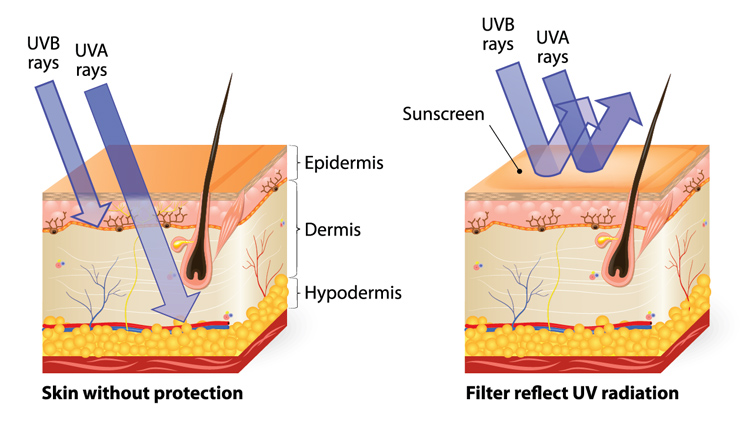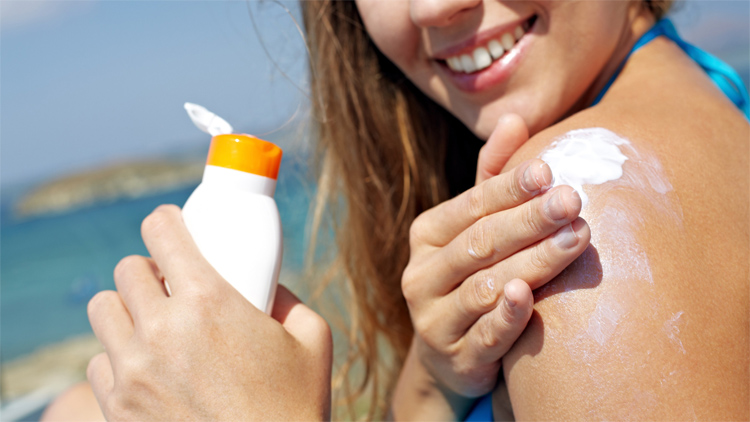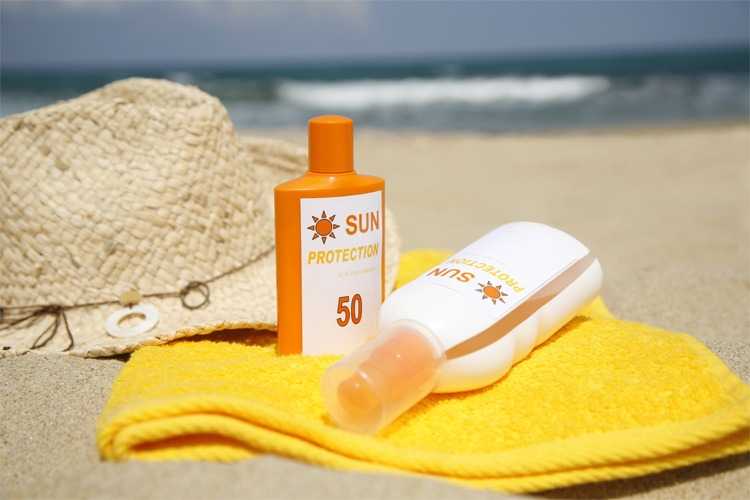The sun is a natural source of vitamin D, but it can also kill us. As of today, sunscreen is still the best protective weapon against UV A/B radiation.
If you enjoy outdoor activities and water sports, sunscreen is an essential health product because it will protect your skin against the sun's UV rays.
While the sun fuels your body with natural vitamin D properties, it can also cause dangerous sunburns and increase the risk of developing skin cancer and premature aging.
There's a lot of talk about the potentially harmful effects of sunscreen. The controversial debate mixes market share wars with empirical conclusions and debatable scientific conclusions.
One thing is for sure: all sunscreens interact, positively or negatively, with your endocrine system, the chemical structure of your body that secretes hormones into the circulatory system.
In general, we could say that the majority of sunscreen products are safe to use. Of course, not all formulas are equal, and not all defend your skin as they should.

There are two types of sunscreen - mineral-based and chemical-based - and they both form a physical barrier that scatters or blocks ultraviolet radiation.
A chemical-based sunscreen typically includes chemicals like avobenzone, homosalate, octinoxate, octisalate, octocrylene, and oxybenzone.
Oxybenzone is the most common sunscreen chemical. Some studies indicate that it may lead to endometriosis in women and reduce sperm count in the male population.
However, oxybenzone is also one of the few ingredients that actually defends and protects your skin.
United States and Europe: Two Sides of the Same Sunscreen
But there are many more chemical ingredients included in commercial sunscreens that have been approved by the Food and Drugs Administration (FDA). They are as follows:
UVB | Chemical Absorbers
- Aminobenzoic acid;
- Cinoxate;
- Homosalate;
- Octocrylene;
- Octinoxate;
- Octisalate;
- Octyl dimethyl;
- Phenylbenzimidazole sulfonic acid;
- Triethanolamine salicylate;
UVA | Chemical Absorbers
- Avobenzone;
- Dioxybenzone;
- Menthyl Anthranilate;
- Oxybenzone;
- Sulisobenzone;
Mineral-based sunscreens have their downside, too. Some of them are not chemical-free, and in some cases, ultra-small particles may enter your body and harm your body.
The FDA approved the use of two mineral ingredients in sunscreens:
- Titanium dioxide;
- Zinc oxide;

Interestingly, the European authorities have set a wider filter and authorized the use of 12 ingredients that are not allowed in the United States. They are as follows:
- Amiloxate (UVB);
- Bemotrizinol (UVA and UVB);
- Bisdisulizole Disodium (UVA and UVB);
- Bisoctrizole (UVA and UVB);
- Diethylamino hydroxy benzoyl hexyl benzoate (UVA);
- Drometrizole trisiloxane (UVA and UVB);
- Ecamsule (UVA);
- Enzacamene (UVB);
- Iscotrizinol (UVB);
- Octyl Triazone (UVB);
- Polysilicone 15 (UVB);
- Tris-biphenyl triazine (UVB);
So, are sunscreens toxic? Will these chemical and mineral ingredients hurt the human body?
Hundreds of scientific studies and academic analyses have been carried out already, but the results are often inconclusive. That said, the occasional use of sunscreens is still the best weapon against skin cancer.
And forget the natural formula missionaries - coconut oil is not an effective UV blocker.
Finally, remember that clothes are always the most powerful protection against the harmful effects of the sun. If you're going out to the beach or surfing, make sure to use good, high-protection protection sunscreen.
According to the American Academy of Dermatology, you should apply sunscreen 30 minutes before getting exposed to the sun because it takes around 15 minutes for your skin to absorb UV radiation.
If you have children, and although no scientific evidence proves its harmful effects, try to avoid sunscreens with oxybenzone.
